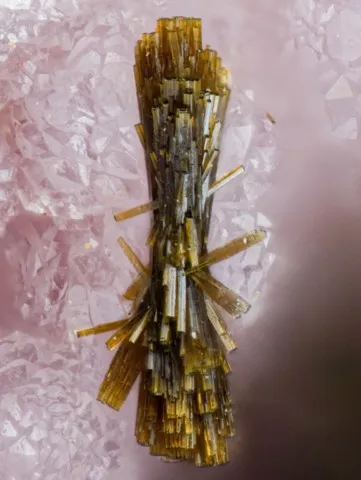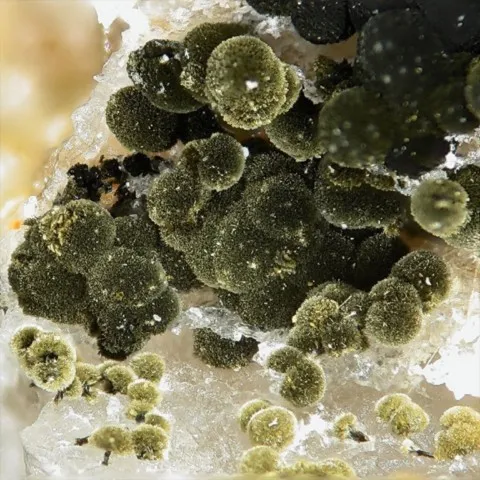FRONDELITE
Class : Phosphates, arsenates, vanadates
Subclass : Anhydrous phosphates
Crystal system : Orthorhombic
Chemistry : MnFe4(PO4)3(OH)5
Rarity : Quite common
Frondelite is a secondary phosphate of manganese and iron which forms a series with rockbridgeite, the iron pole. It comes from the alteration of primary phosphates (particularly triphylite) in granitic pegmatites. It was named in honor of Cliffort Frondel, Professor of Mineralogy at Harvard University. Frondelite occurs mainly in masses and botryoidal encrustations with a fibroradiated texture, often geodic. It is more rarely encountered in fibrous crystals which can reach 8 cm. It is dark olive green to greenish black, or ocher-yellow to red-brown, browning in different shades by surface oxidation.
Main photo : Frondelite from Sítio do Castelo Mine, Folgosinho, Gouveia, Guarda, Portugal © Pedro Alves
Frondelite in the World
Twinning
No twin known for this mineral species.
Fakes and treatments
No fakes recorded for this mineral species.
Hardness : 4.5
Density : 3.45
Fracture : Irregular to fibrous
Streak : Green to brown
TP : Translucent
RI : 1.860 to 1.893
Birefringence : 0.033
Optical character : Biaxial -
Pleochroism : Visible
Fluorescence : None
Solubility : Hydrochloric acid
Magnetism : None
Radioactivity : None





